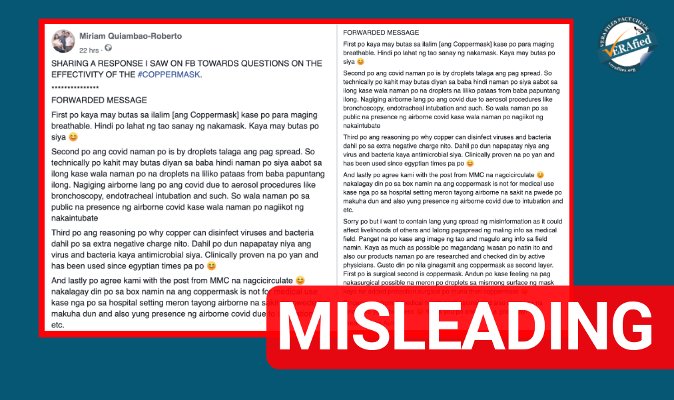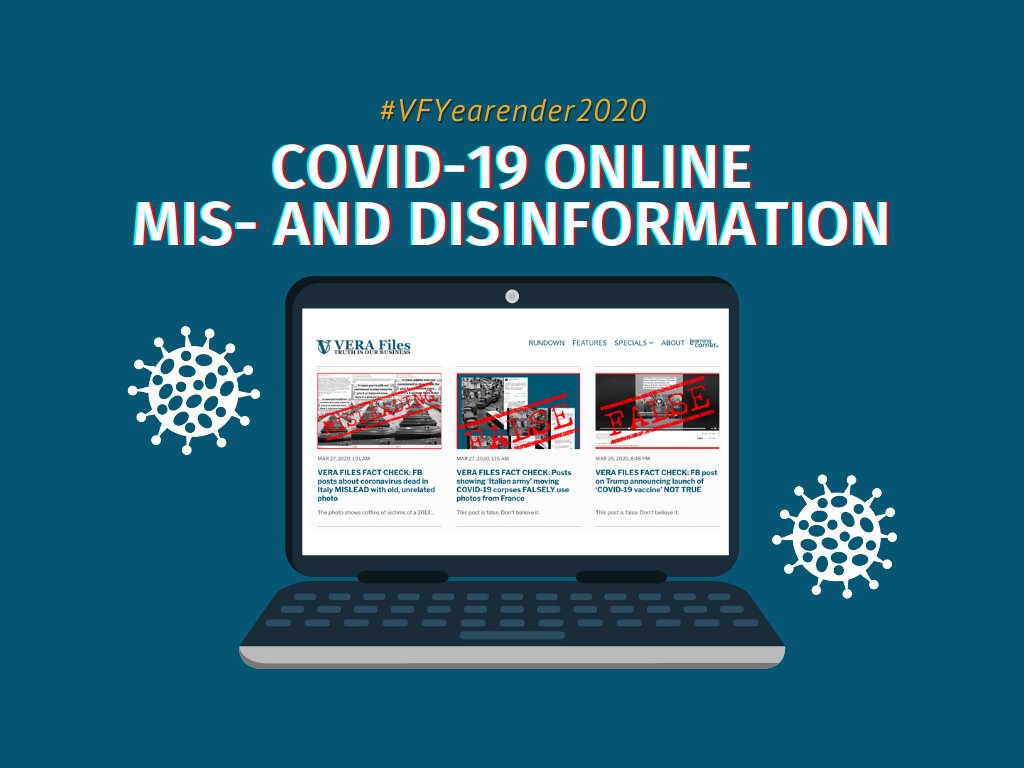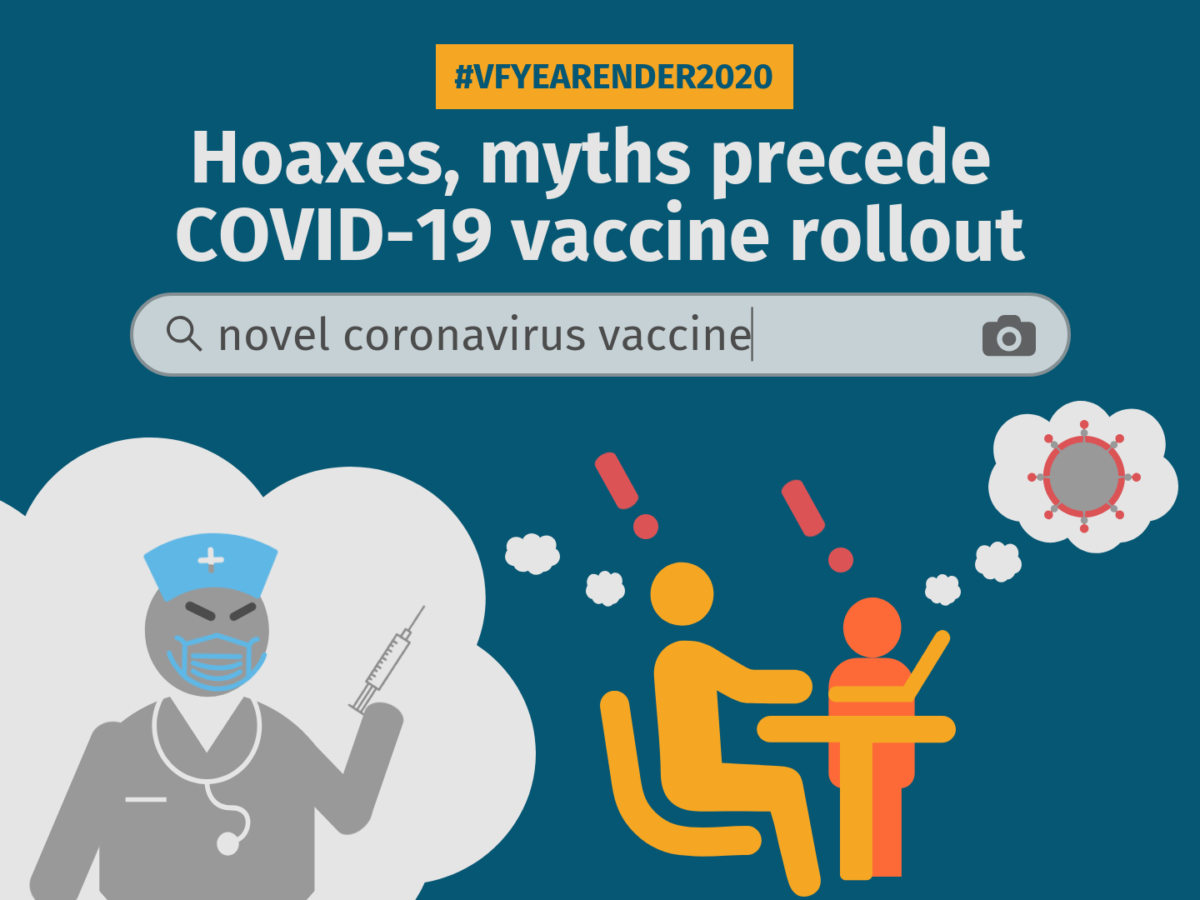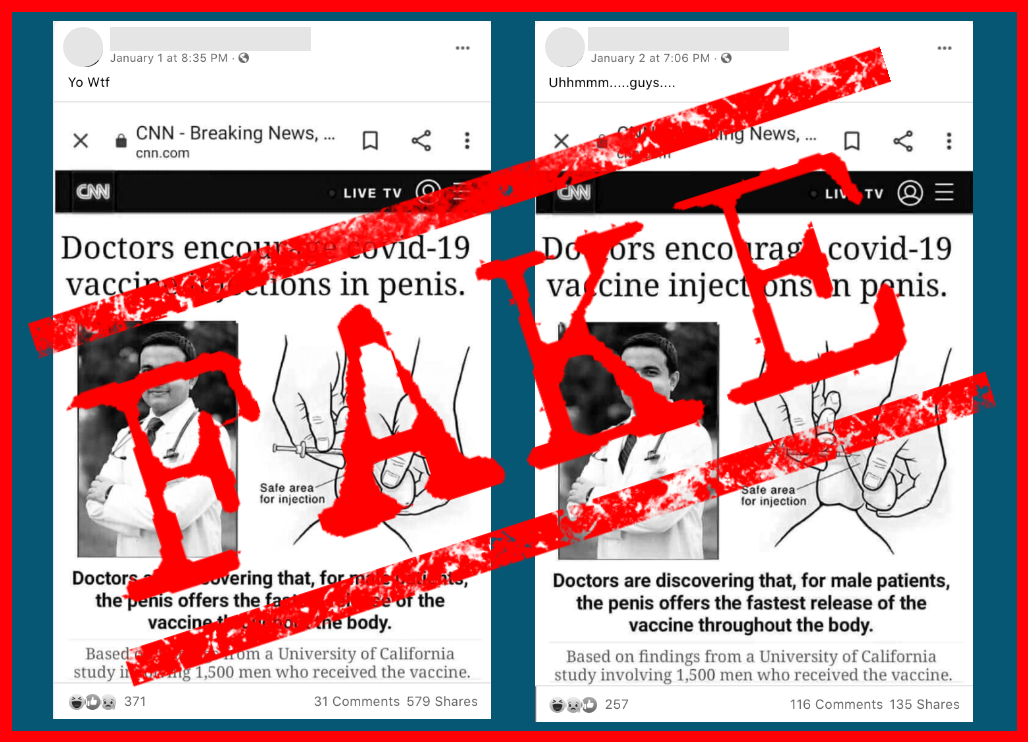In promoting the use of copper-infused face masks amid the coronavirus disease 2019 (COVID-19) pandemic, former beauty queen Miriam Quiambao-Roberto shared in her Facebook status on Jan. 6 a “forwarded message” that cited faulty reasoning on the ability of copper to “disinfect virus and bacteria.”
The message from an unnamed author which also claims that the COVID-19 virus ー or the severe acute respiratory syndrome coronavirus 2 (SARS-CoV-2) ー becomes airborne only due to “aerosol procedures” is wrong.
STATEMENT
In a now-deleted FB status, Quiambao-Roberto shared a response of an alleged “medical health professional” to “questions” on the effectiveness of copper-infused face masks. The said author disclosed that he is also selling the product.
Part of the response read:
“…[A]ng reasoning po why copper can disinfect viruses and bacteria [ay] dahil po sa extra negative charge nito. Dahil po dun napapatay niya ang virus and bacteria kaya antimicrobial siya. Clinically proven na po yan and has been used since egyptian times pa po.”
(The reason why copper can disinfect viruses and bacteria is because (sic) of the extra negative charge it has. It is because of this that the mask can kill viruses and bacteria, hence it is antimicrobial. It has been clinically proven already and has been used since Egyptian times.)
Source: Miriam Quiambao-Roberto personal Facebook account, SHARING A RESPONSE I SAW ON FB…,” Jan. 6, 2021 (Archived)
The post, which is also published in a verified FB page under Quiambao-Roberto’s name, likewise dismissed claims that the virus may enter through an opening at the bottom portion of the mask.
“[A]ng covid naman po is by droplets talaga ang pag spread… Nagiging airborne lang po ang covid due to aerosol procedures like bronchoscopy, endotracheal intubation and such. So wala naman po sa public na presence ng airborne covid kase wala naman po nagiikot ng nakaintubate
(The covid [virus] is really spread through droplets… It only becomes airborne due to aerosol procedures like bronchoscopy, enotracheal intubation and such. So there is no presence of airborne covid [virus] in public because no one roams around intubated).”
The status was supposedly made to “contain the spread of misinformation” about copper-infused masks.
In response to some netizens’ comments calling out the misinformation in her status, Quiambao-Roberto said: “Wala po namang sapilitan. Choice nyo, choice ko. Respetuhan tayo. Basta ang alam ko, safe ako sa coppermask. It is anti-viral (sic) and safe for daily, non-medical use.”
(No one is forcing you. Your choice, my choice. Let’s respect each other. But based on what I know, I am safe with coppermask. It is antiviral and safe for daily, non-medical use.)
Quiambao-Roberto’s FB status, in which she mentioned a specific brand of copper-infused masks, was shared 2,600 times on the platform before it was taken down.
FACT
Despite claiming to do otherwise, the status shared by Quiambao-Roberto misinforms.
While several scientific studies have indeed shown that copper and copper alloys, or copper mixed with other metals (such as brass, bronze, and copper-nickel), have antimicrobial properties — meaning it can kill or inactivate microbes like fungi, bacteria, and viruses — it is not because of a supposed “extra negative charge.”
According to Mary Donnabelle Balela, an associate professor at the Department of Mining, Metallurgical, and Materials Engineering at the University of the Philippines Diliman, it is actually copper’s ions (which are positively charged particles) that are the “most active agents” against microbes, rather than its electrons (which are negatively charged).
Balela said one of the many ways the metal can kill microbes is by oxidizing a copper surface, in which the metal releases ions and electrons.
The ions then “burst the cell membrane and internal structure of the bacteria … Therefore, the more [copper] ions released on the surface, the more effective it is and the faster it will inhibit the growth or directly kill the bacteria,” said Balela, whose specialty is in nanotechnology.
“If [manufacturers] did some separate treatment on the copper mask surface to make it negatively charge[d], then the surface itself can be negatively charged,” she said. But “copper as a metal is not negatively charged.”
Public health experts from international nonprofit Meedan also told VERA Files Fact Check that, while there has been research suggesting SARS-CoV-2 does not survive long on copper surfaces, it is important to keep in mind that these studies were done in controlled, laboratory setups.
One of the oft-cited studies in defense of copper masks, according to Meedan’s experts, is a comparative study published April 2020 in The New England Journal of Medicine, which found that “no viable SARS-CoV-2” was measured on solid copper surfaces after four hours.
But this does not mean that copper products are “always effective” in protecting against COVID-19, the team of experts said.
A “critical amount of copper” is also needed on surfaces in order for it to prevent the growth or to kill bacteria or viruses, Balela said, noting that “less than this amount and no significant antimicrobial property [will be] observed.”
Experts from Meedan added: “In fact, many copper-based products currently on the market do not contain sufficient concentration of copper for significant antimicrobial effects.”
Apart from the amount of copper used, Balela mentioned other factors that will impact the metal’s contact-killing properties, including:
- the type of copper used (e.g. copper metal, copper sulfate, copper carbonate, or copper oxides);
- the manner in which it is introduced in the product (whether embedded or applied on the surface); and
- the surface area involved (whether the copper is directly exposed on the surface).
The microbe-killing property of copper is also not immediate.
“Copper does not act instantaneously against microbes such as viruses, with research findings showing that copper can take 45 minutes just to reduce the amount of virus on a surface by half,” said Meedan’s experts.
A literature review on the use of copper to help prevent transmission of some coronaviruses, published in the journal Diagnostic Microbiology and Infectious Disease in August 2020, noted that the data reviewed appear to support the use of copper materials against some viruses, and seemed to be a “complementary strategy” that may help reduce the transmission of infectious diseases.
Nevertheless, it said, “more research would be beneficial to support [copper’s] usage with the new SARS-CoV-2.”
Apart from the misleading claim on copper’s ability to “disinfect viruses and bacteria,” the post Quiambao-Roberto shared also carried multiple statements that needed context.
It claimed that antimicrobial properties of copper “is clinically proven” and “has been used since the Egyptian times.”
Copper has been found to have been used “to sterilize chest wounds and drinking water” in ancient Egypt, and there are several published studies that demonstrate the metal’s antimicrobial property. The U.S. Environmental Protection Agency (EPA) had also registered almost 300 different copper surfaces as antimicrobial in 2008.
But EPA has clarified that any claim that antimicrobial copper can kill 99.9% of bacteria is only applicable to six specific bacteria and within two hours of contact. These six are: Vancomycin-Resistant Enterococcus faecalis (VRE), Methicillin-resistant Staphylococcus aureus (MRSA), E.coli O157:H7, Enterobacter aerogenes, Pseudomonas aeruginosa, and Staphylococcus aureus.
In a position statement on the COVID-19 pandemic, the U.S.-based nonprofit Copper Development Association said there is still “limited evidence” and “further testing would be required” to assess the effectiveness of copper surfaces, including EPA-registered products, against SARS-CoV-2.
On airborne transmission
The FB post claimed that the COVID-19 virus will become airborne only during the conduct of “aerosol procedures,” among them, those that have to do with intubation. Quiambao-Roberto also said in one of her responses in the FB discussion that COVID-19 is spread “through close contact, not airborne.”
This is wrong.
While the novel coronavirus is mainly spread by respiratory droplets, it can become airborne when tiny droplets called droplet nuclei or aerosols containing it get suspended in the air. (See VERA FILES FACT CHECK: Duterte’s claim that COVID-19 virus is airborne needs context)
Although research on aerosol transmission is still ongoing, the World Health Organization and the U.S. Centers for Disease Control and Prevention noted emerging evidence on airborne transmission in “indoor crowded poorly ventilated spaces.” Enclosed spaces have been found to contain enough virus to cause infections in people more than six feet apart, or who passed through a space soon after an infectious person left the room, according to Meedan’s public health experts.
BACKSTORY
In a phone interview on Jan. 7, Edwin Pasumbal, who is a member of the Philippine Society for Microbiology and Infectious Diseases Inc. (PSMID) told VERA Files:
“Ang problem with copper mask, not only copper masks but also other face masks available na may (with) valves, it actually defeats the purpose of the face mask kasi ‘pag meron kang (because when there is a) valve, like yung (the) copper mask meron do’n sa ilalim (it has one below), how can the breathed air, the exhaled air, paano siya mafifilter kung meron siyang butas sa baba (how can it be filtered when there is a valve below)?”
Apart from the PSMID, other medical and health groups like the Philippine College of Physicians and Makati Medical Center have likewise discouraged the use of some commercially available copper-infused masks because “the valves and slits in their design allow unfiltered air to escape when breathing out” and “make filtering respiratory droplets less effective.”
Karrera Djoko, a biochemist and microbiologist from Durham University in the United Kingdom, warned that there could be issues with durability of copper products, particularly for face masks that may be repeatedly disinfected, “because many common household cleaners have compounds that can strip copper ions from a surface,” as cited by Meedan in its experts database on COVID-19.
The Department of Health, on the other hand, has said copper face masks can still prevent the spread of COVID-19 as a physical barrier when an infected person coughs or sneezes droplets. That said, it is still not considered “medical-grade,” meaning, it is not “recommended and approved for use in medical settings” such as hospitals, healthcare facilities, and high-risk contaminated areas, the department added.
The specific copper mask brand featured in the misleading post is also not part of the list of the Philippines’ Food and Drug Administration of registered face masks for medical use as of Jan. 18, 2021.
Sources
World Health Organization, Modes of transmission of virus causing COVID-19: implications for IPC precaution recommendations, March 29, 2020
Meedan Digital Health Lab, What is the existing research on copper’s effectiveness in dealing with COVID-19, particularly when used in face masks?, Jan. 19, 2021
New England Journal of Medicine, Aerosol and Surface Stability of SARS-CoV-2 as Compared with SARS-CoV-1, April 16, 2020
U.S. National Library of Medicine, The use of copper to help prevent transmission of SARS-coronavirus and influenza viruses. A general review, Aug. 15, 2020
U.S. Environmental Protection Agency, Antimicrobial Copper Alloys – Group I, Aug. 1, 2014
Copper Development Association, CDA Position Statement on Coronavirus (COVID-19) Pandemic
Copper Development Association, Antimicrobial Properties
Copper Development Association, Antimicrobial Copper Site |
Copper Development Association, Copper Facts: Antimicrobial Copper
World Health Organization, Transmission of SARS-CoV-2: implications for infection prevention precautions, July 9, 2020
Meedan Digital Health Lab, What do we know so far about airborne transmission and how does it differ from respiratory droplet transmission?, Jan. 12, 2021
Copper’s antimicrobial, antibacterial, and antiviral properties
- Nature, Rapid in situ assessment of Cu-ion mediated effects and antibacterial efficacy of copper surfaces, May 25, 2018
- U.S. National Library of Medicine, Metallic Copper as an Antimicrobial Surface, Dec. 30, 2010
- U.S. National Library of Medicine, Potential use of copper surfaces to reduce survival of epidemic meticillin-resistant Staphylococcus aureus in the healthcare environment, July 1, 2006
- SAGE Journals HERD: Health Environments Research & Design Journal, https://journals.sagepub.com/doi/full/10.1177/1937586715592650, July 10, 2015
- Society For Applied Microbiology, Contact killing and antimicrobial properties of copper, Dec. 27, 2017
Philippine Society for Microbiology and Infectious Diseases, What Do You Know About COVID-19 & Face Mask Trends, Jan. 5, 2021
Makati Medical Center, Advisory, Jan. 5, 2021
Philippine College of Physicians, Face mask should cover your face from the bridge of your nose to under the chin, Jan. 6, 2021
Food and Drug Administration, LIST OF NOTIFIED FACE MASK, Jan. 18, 2021
Department of Health on Copper Face Masks
- ABS-CBN, DOH confirms copper face mask not medical-grade but can still help curb COVID-19 spread, Jan. 6, 2021
- Inquirer.net, DOH confirms: Copper Face Mask not for medical use but helps slow down spread of COVID, Jan. 8, 2021
- Reportr, Coppermask DOH comment is it safe, Jan. 7, 2021
The New York Times, Copper Won’t Save You From Coronavirus, June 19, 2020
(Guided by the code of principles of the International Fact-Checking Network at Poynter, VERA Files tracks the false claims, flip-flops, misleading statements of public officials and figures, and debunks them with factual evidence. Find out more about this initiative and our methodology.)





